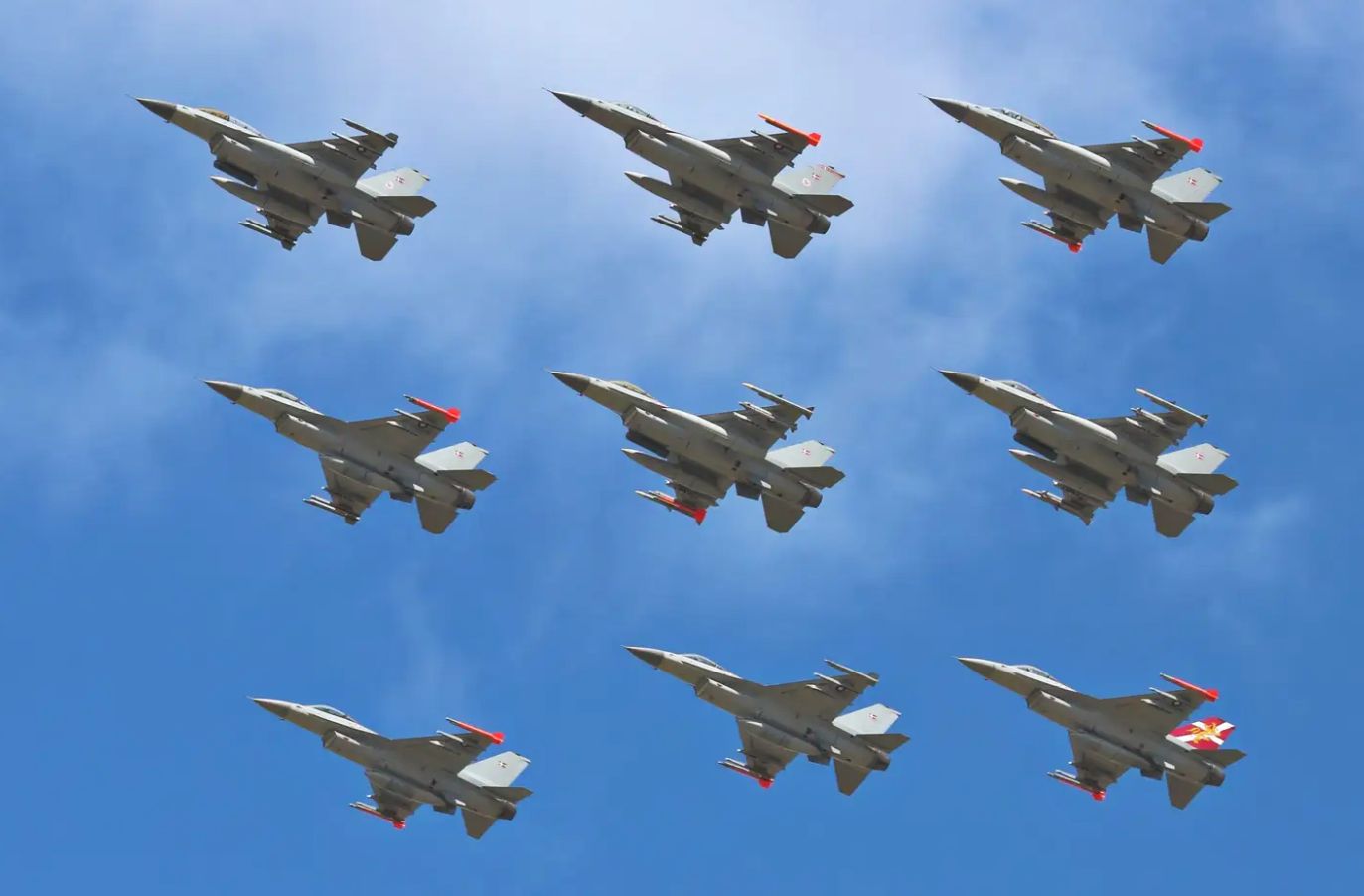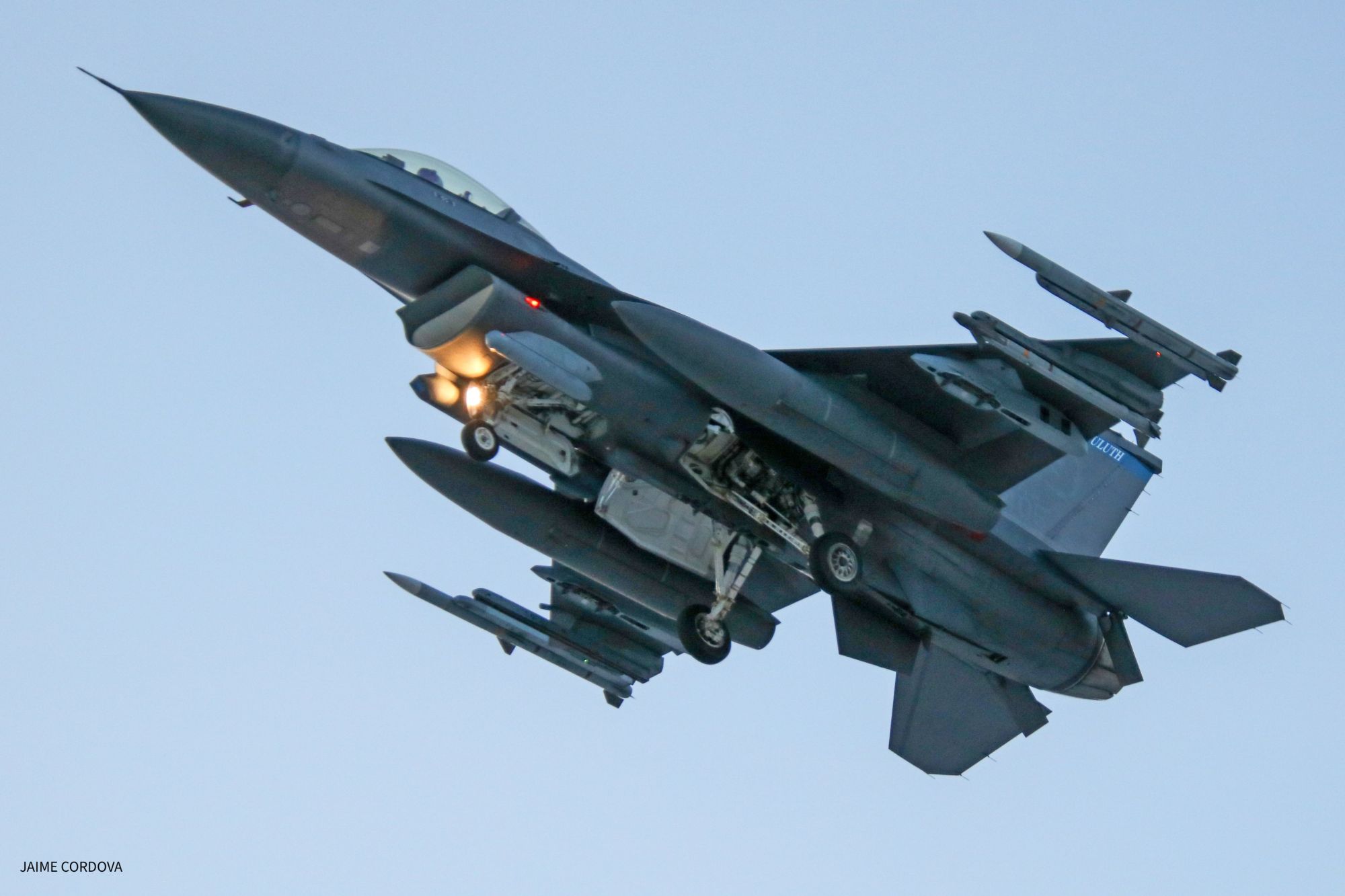With Ukraine constantly pushing for F-16 fighter jets, military officials and analysts in the West have expressed their reservations. Besides the apparent fear of escalation with Russia, there is concern that these aircraft might actually become sitting ducks for Russian missiles.
Ukraine has once again renewed the pitch for F-16 fighter jets, with the Foreign Minister Dmytro Kuleba telling the EU Foreign Affairs Council meeting that the wisest investment in the long-term security of the European continent will be to provide Ukraine with modern combat aircraft.
However, a popular air warfare expert has noted that if Ukraine ever receives F-16 fighters from the US, the aircraft may not be very durable. The F-16 needs specially constructed airbases since it is so delicate, and Russia may be able to locate and attack those locations.
According to Justin Bronk, an air-warfare specialist with the Royal United Service Institute (RUSI) think tank in Britain, the F-16 has a sizable air inlet under the nose that “sucks everything from the ground directly into it.
In general, F-16s need highly clean, very well-maintained air bases. Because the F-16 is built to have an excellent thrust-to-weight ratio and “there is no more weight on the jet than there needs to be,” Bronk noted, adding it has “fairly lightweight” landing gear.
However, he said that the Russian and Ukrainian air bases and airfields are primarily primitive and unsuitable for the F-16 Fighting Falcon or some other Western fighters.
“You would have to do a lot of work to get those Ukrainian, old Soviet-pattern runways to a clean enough state to use an F-16 without high risk of Foreign Object Debris (FOD) going in and damaging the engines,” Bronk said. He said that many Ukrainian airfields are too short for an F-16 to land while fully equipped.
Bronk continued, “You’d be looking at resurfacing work on runways and possibly extension work, all of which are highly visible” to Moscow’s sources on the ground and to Russia’s satellites.
A former F-16 fighter pilot anonymously echoed the same views to the EurAsian Times. “Yes, it is true that F-16 is very FOD sensitive, so the airfield should be designed with this in mind. The Ukrainians would have to carry out some refurbishment work to accommodate these fighter jets.”
On his part, Bronk also warned that once the location of these air bases where the F-16s are stationed is established by Russia, their troops could use their limited inventory of long-range missiles to hit these bases and annihilate the F-16s while they are still parked on the ground.
“All of Ukraine’s airbases are within reach — because the whole country is within reach — of Russia’s ballistic and cruise missiles,” Bronk said. Even though Russia’s missile stockpile is dwindling, any Ukrainian F-16 fleet might be neutralized with just a few missile launches against a few sites.
“Russia can put craters in things that it wants to,” Bronk said. “It can’t do loads of them. But if you have to centralize something like the F-16 around one or two bases because you can only prepare one or two to the required standard within the resource constraints, that’s quite a vulnerable posture.”
US Fighter Pilot Speaks
To probe further, EurAsian Times spoke to a US fighter pilot asking whether arming Ukraine with F-16s is a good idea.
USAF officer Lt Col Jahara Matisek replied: “So dispersed F-16 operations does become a sticking point because the air intake is so low to the ground and vulnerable to sucking in pebbles and other debris that damage the engine. That’s why many have suggested that the Swedish Gripen jets would be the perfect fit because it is designed for dispersed operations from roads, highways, etc.”
“As for F-16 air-to-air combat, F-16s would be formidable to the Russian Air Force if the F-16s given to Ukraine had the most advanced avionics and air-to-air missiles,” Matisek added.
Officials in Kyiv continue to push for the advanced fighter jet, nonetheless. With several NATO states like Denmark considering a possible transfer, Ukraine’s defense minister Oleksiy Reznikov said a positive decision could be made in two months. On its part, the US has already clarified that the proposal is not under active consideration.

Ukraine Has Infrastructure For F-16s
Contrary to the observation made by Bronk, the Ukrainian Air Force spokesperson Yuriy Inhat said that Ukraine already had the required infrastructure for the deployment and operation of Western fighter jets, like the F-16.
“There are no issues with infrastructure at all. American aviation has already landed here, including F-15s and F-16s. These planes were at our airfields in 2012 and 2018. We have dozens of different airfields – operational, regular – that can be used for these types of planes,” he said.
The spokesperson also noted that there are also sections of Ukrainian highways in Ukraine where the planes could land. “This is a normal practice in all countries of the world. In a country that is at war, infrastructure must be built. I’ll reveal a little secret – this has been done for a long time,” he added.
Not just that, Ukrainian Air Force commander Serhiy Holubtsov said on March 20 that the Ukrainian pilots could learn to operate the F-16 in just six months. In early March, media reports suggested two Ukrainian pilots were in the US for an assessment regarding how long it may take to train them to fly the aircraft.
As Poland and Slovakia pledged their MiG-29 combat jets to Ukraine earlier, Russia threatened to destroy any fighter jets that are delivered to Kyiv by NATO countries.
This threat becomes even more enhanced when it comes to the cutting-edge and combat-hardened F-16 Fighting Falcons, a small, light fighter plane first developed in the 1970s. It entered service in 1979 and saw extensive deployment by the US Air Force during the wars in Afghanistan and Iraq.

The Russians are aware that Western-grade fighter jets with better avionics and armament, as compared to Ukrainian Soviet legacy planes, can deter Russia to some extent. In an interview with a daily military website Voennoe Delo, a Russian reserve pilot Vasily Dandykin said that the F-16 could pose a severe challenge to the Russian Aerospace Force’s (VKS’) Su-35 and MiG-31 aircraft.
“The F-16 is a 4th generation fighter. It will be too durable against our Su-35, Su-35SM, and MiG-31,” said Dandykin, adding that the MiG-31 and Su-35 are well-equipped to deal with the F-16 if they do indeed meet in the sky over Ukraine.
It’s more than a year of fighting, and there has been limited use of air power, with neither side succeeding in establishing air superiority. Despite the effectiveness of Russia’s anti-aircraft defenses, Moscow has hesitated to risk using its air force outside the front lines because it also wants to limit losses.
On its part, Ukraine believes the situation could be reversed by getting access to the F-16 fighter jets.
Disclaimer: The opinions of Lt. Col Matisek do not reflect the official views of the US Air Force, Department of Defense, or the US Government.
- Contact the author at sakshi.tiwari9555(at)gmail.com
- Follow EurAsian Times on Google News




